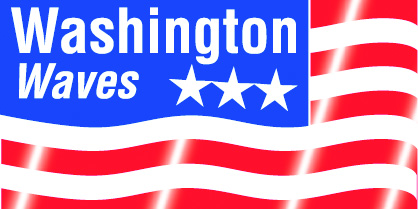Washington, D.C.—President Joe Biden’s proposal to cut more than a billion dollars from the U.S. Army Corps of Engineers budget in fiscal year 2023 drew more push back from another key Democrat.
“As we begin our discussion on fiscal year 2023, I am discouraged by the proposed reductions of $1.7 billion from the Army Corps and $486 million for (the Bureau of) Reclamation,” said Rep. Marcy Kaptur (D-Ohio), chairwoman of the House Appropriations Subcommittee on Energy and Water Development.
Citing the historic investments made through the Infrastructure Investment and Jobs Act, Kaptur said the government still has more work to do to rebuild the nation’s crumbling infrastructure.
Her comments echoed those of her counterpart in the Senate, Democrat Dianne Feinstein of California.
Kaptur also ticked off a list of “extreme weather events” that occurred last year in several states, ranging from a record cold snap that crippled the power grid in Texas to the first ever water shortage declared on the Colorado River and floods and wildfires in California.
Kaptur also used her opening statement at a hearing on Biden’s budget to warn of future challenges such as invasive Asian carp in the Great Lakes region.
Rep. Mike Simpson (R-Idaho), the subcommittee’s ranking member, also expressed disappointment over the proposed budget cuts.
“In contrast to administrations of both parties, Congress, on a bipartisan basis, has repeatedly supported these programs,” Simpson said.
He pointed out the Corps faces a cut of more than 20 percent.
Neither Michael Connor, assistant secretary of the Army for Civil Works, nor Lt. Gen. Scott Spellmon, chief of engineers and commanding general of the Corps, was forced to defend the cuts proposed by the president’s budget.
Connor said the $6.6 billion budget for the Civil Works program, down from the $8.3 billion in the current fiscal year, continues to focus on high economic and environmental returns.
Marine Highway Boost
The Maritime Administration (MarAd) announced a $14.8 million boost in grant funding for the America’s Marine Highway Program (AMHP), bringing the available funding to $39.8 million.
MarAd also extended the deadline for applications to 5 p.m. EDT on June 17.
“Under the president’s leadership, we are making a once-in-a-generation investment in our ports and intermodal infrastructure to move goods faster, strengthen supply chain resiliency and reduce the climate impacts of port operations,” acting MarAd Administrator Lucinda Lessley said.
For additional information, contact Timothy Pickering at 202-366-0704 or MH@dot.gov.
Waterways Commerce Cutter
The Coast Guard announced the availability of a Record of Decision (ROD) for the Waterways Commerce Cutter (WCC) Program’s acquisition and operation of a planned 30 WCCs.
In its Federal Register notice, the Coast Guard also announced its decision to implement Alternative 1 as described in the WCC’s Final Programmatic Environmental Impact Statement (PEIS).
In the Final PEIS, the Coast Guard identified that action as its preferred alternative in meeting the purpose and need to fulfill Aids to Navigation (ATON) mission requirements in the inland waterways and Western Rivers proposed action area, which includes portions of the Alaska Inside Passage, portions of the Great Lakes and several other navigable waterways around the United States.
For additional information, contact Lt. Cmdr. S. Krolman at 202-475-3104.
LED Radio Interference
The Coast Guard is urging the use of a new technical standard designed to protect maritime VHF radio and AIS and other receivers from light emitting diode (LED) radio interference.
Standard 13700.0 was adopted by the Radio Technical Commission for Maritime Services (RTCM), a private international non-profit organization that worked with the Coast Guard in researching the problem and conducting exhaustive tests.
“The USCG is confident that LED lighting or other equipment meeting this standard will not cause interference to these systems,” stated Marine Safety Information Bulletin 03-22.
“The Coast Guard urges manufacturers, installers and users of LED navigation lights, deck lights and other above-deck lighting, as well as other electrical equipment installed in the vicinity of shipboard antennas, to consider use of this standard.”
Questions may be forwarded to Coast Guard Spectrum Management and Communications Policy Division (CG-672) at HQS-SMB-CG-672@USCG.MIL or to the Coast Guard Navigation Center’s “Contact Us” page by selecting “Maritime Telecommunications” as subject.




